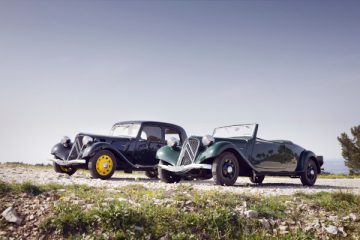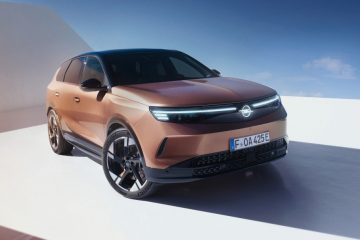![]() INTRODUCTION
INTRODUCTION
Honda Motor Company
Honda is the world’s largest engine manufacturer, producing and selling cars, motorcycles and power equipment products throughout the world. Honda has 66 manufacturing plants in 27 countries and in 2010, sold 27 million products worldwide.
Honda has a proven track record in reducing the environmental impact of our activities and for the development and production of advanced low emission technologies.
Road to Zero Emissions
For many years, Honda has been working on the electrification of mobility products. We see electric drive technology as a key factor in reducing CO2 emissions.
 In 1997 the EV Plus, Honda’s first full electric vehicle, was brought to the market. Our earliest hybrid vehicle, the first generation Insight, was launched in 1999. As our next move towards sustainable mobility, Honda will start selling a Plug-in hybrid and a full Electric Vehicle in Japan and in the USA from 2012. Our story of electrification would not be complete without mentioning our ultimate zero emission electric vehicle – the FCX Clarity fuel cell electric vehicle.
In 1997 the EV Plus, Honda’s first full electric vehicle, was brought to the market. Our earliest hybrid vehicle, the first generation Insight, was launched in 1999. As our next move towards sustainable mobility, Honda will start selling a Plug-in hybrid and a full Electric Vehicle in Japan and in the USA from 2012. Our story of electrification would not be complete without mentioning our ultimate zero emission electric vehicle – the FCX Clarity fuel cell electric vehicle.
Everyone wants to reduce CO2 to preserve the environment. As the world’s largest engine manufacturer, Honda is determined to achieve a zero emission mobility society and subsequently presents a clear journey towards sustainable, mobility solutions:
* Refining and improving combustion engines
* Expanding our hybrid car range
* Evolving hybrid with plug-in technology
* Zero Emission battery electric vehicles
* The ultimate solution for the future, the FCX Clarity.
We call this journey Honda’s Road to Zero Emissions.
Greener Motorcycles
 The first stage of Honda’s Road to Zero Emissions is to focus on improving our combustion engine technology to reduce emissions and improve fuel efficiency.
The first stage of Honda’s Road to Zero Emissions is to focus on improving our combustion engine technology to reduce emissions and improve fuel efficiency.
Honda is close to achieving its target of shifting entirely from 2-stroke petrol engines to cleaner 4-stroke engines for its bikes and in Europe this goal was reached in 2004. We have introduced PGM-FI (Programmed Fuel Injection) and other engine control technologies in many of our models and we were an early proponent of catalytic converters for motorcycles. These ongoing initiatives have resulted in higher fuel economy and cleaner exhaust emissions throughout the Honda motorcycle line-up.
In addition, in Brazil, Honda offers the CG150 TITAN MIX flexible-fuel motorcycle which can be fuelled with petrol and ethanol mixed in any proportion, as well as the PCX 125cc scooter, which features an idle stop function. Around the world, innovative Honda motorcycles like these are contributing to reduced environmental impact.
Honda pioneered the electric motorcycle segment in 1994, when the company leased 200 CUV-ES electric scooters to national and local government agencies in Japan. Now Honda presents EV-neo electric scooter.
EV-neo ACTIVITIES TO DATE
Japan
Lease sales of the EV-neo started in Japan in April 2011 with Honda expecting to sell approximately 1,000 units in the first year. The base price is 454,650 Japanese yen or approximately 4,000 Euros.
The EV-neo is also being used in Honda Electric Vehicle Testing Programmes in Kumamoto and Saitama prefectures. These testing programmes which include motorcycles, automobile and power equipment products based on electromotive technologies will help to test future forms of personal mobility and their potential in CO2 reduction. In the Kumamoto Programme, EV-neo scooters are rented to residents and tourists to provide feedback on their use and benefits and in Saitama they are leased to delivery companies.
Europe
Honda will be bringing the EV-neo to Europe for the first time when a Demonstration Programme with Barcelona City Council gets underway from the beginning of July 2011. The programme will see 18 Honda EV-neo electric scooters leased to city authorities for the period of a year.
This activity will enable Honda to test the Ev-neo in real-life European riding conditions and will help to develop our understanding of electric vehicle usage. Daily monitoring of the EV-neos will take place and will look to analyse riding distance, charging time and load conditions. RACC, Spain’s leading Automobile Club will co-ordinate the monitoring activity in conjunction with Montesa Honda and Barcelona City Council.
EV SYSTEM
Honda designed the EV system for the EV-neo to reflect the basic operation of a petrol engine motorcycle.
. The rider operates the throttle, and an APS (Accelerator Position Sensor) converts the degree of throttle opening into an electric signal.
. The PDU* calculates the optimal motor output level based on the signal from the APS and information from the BMU**.
. Then, to produce this optimal output level, the PDU sends the appropriate amount of electricity from the battery to the motor.
* PDU = Power Drive Unit: See later in this document.
** BMU = Battery Management Unit: Manages battery condition (temperature, remaining charge and other parameters).
EV system: Pathway from throttle input to motor output
(Please find diagram in downloadable .doc file)
POWER UNIT
Honda designed the compact power unit of the EV-neo to fit neatly among the unsprung parts of the machine. The EV-neo offers an output of 2.8 kW (rated output 0.58 kW)-equivalent to a petrol engine motorcycle in the same class. Even when fully loaded with 30 kg of cargo, it can start smoothly and climb a 12° incline.
To create a highly compact power unit, Honda designed all parts to achieve the best balance of weight, size and performance.




